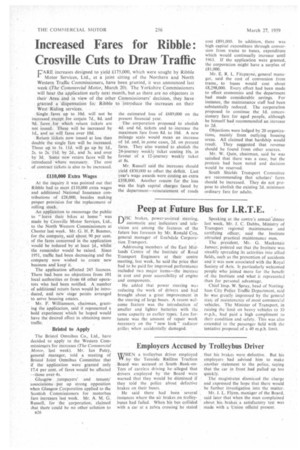Peep at Future Bus for I.R.T.E.
Page 60

If you've noticed an error in this article please click here to report it so we can fix it.
DISC brakes, power-assisted steering, automatic seat indicators and television are among the features, of the future bus foreseen by Mr. Ronald Cox, general manager of Rochdale Corporation Transport.
Addressing members of the East Midlands' Centre of the Institute of Road Transport Engineers at their centre meeting, last week, he said the price that had to be paid for improved performance included two major items—the increase in cost and poor accessibility of engine and components, He added that power steering was reducing the work of drivers and had brought about a great improvement in the steering of large buses. A recent welcome feature was the introduction of smaller and lighter batteries with the same capacity as earlier types. Less fortunate was the amount of repair work necessary on the " new look" radiator grilles when accidentally damaged. Speaking at the centre's annuardinner last week, Mr. J. C. Dabbs, Ministry of Transport regional maintenance and certifying officer, said the Institute attracted practical maintenance men.
The president, Mr.. G. Mackenzie Junner, pointed out that the Institute was steadily spreading its activities into allied. fields, such as the prevention of accidents and it was now associated with the Royal Society of Arts. It particularly welcomed people who joined more for the benefit of. the Institute and what it representeJ than for personal advantage.
Chief Insp. W. Spray, head of Nottingham City Police Traffic Department, said he was greatly impressed by the 'general state of maintenance of most commercial vehicles. The Minister of Transport, in raising the limit on heavy vehicles to 3D m.p.h., had paid a high compliment to their condition and safety. This was also extended to the passenger field with the tentative proposal of a 40 m.p.h. limit.




































































































